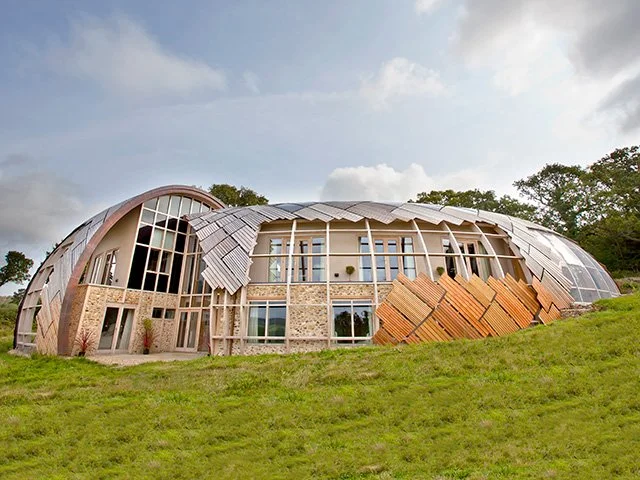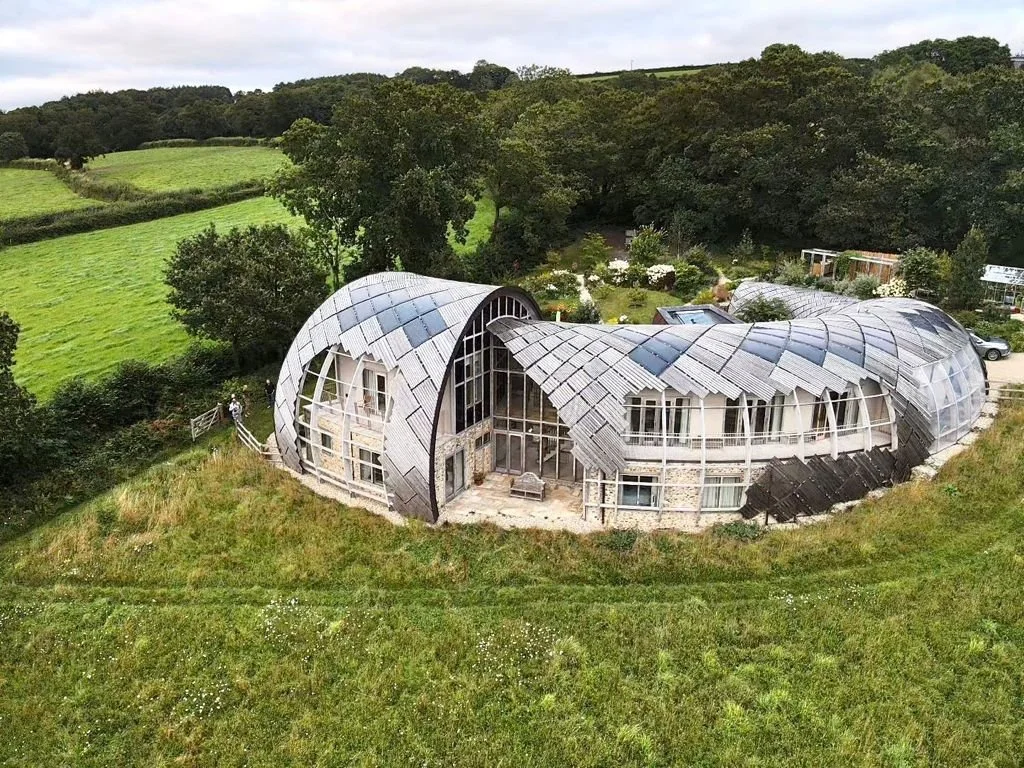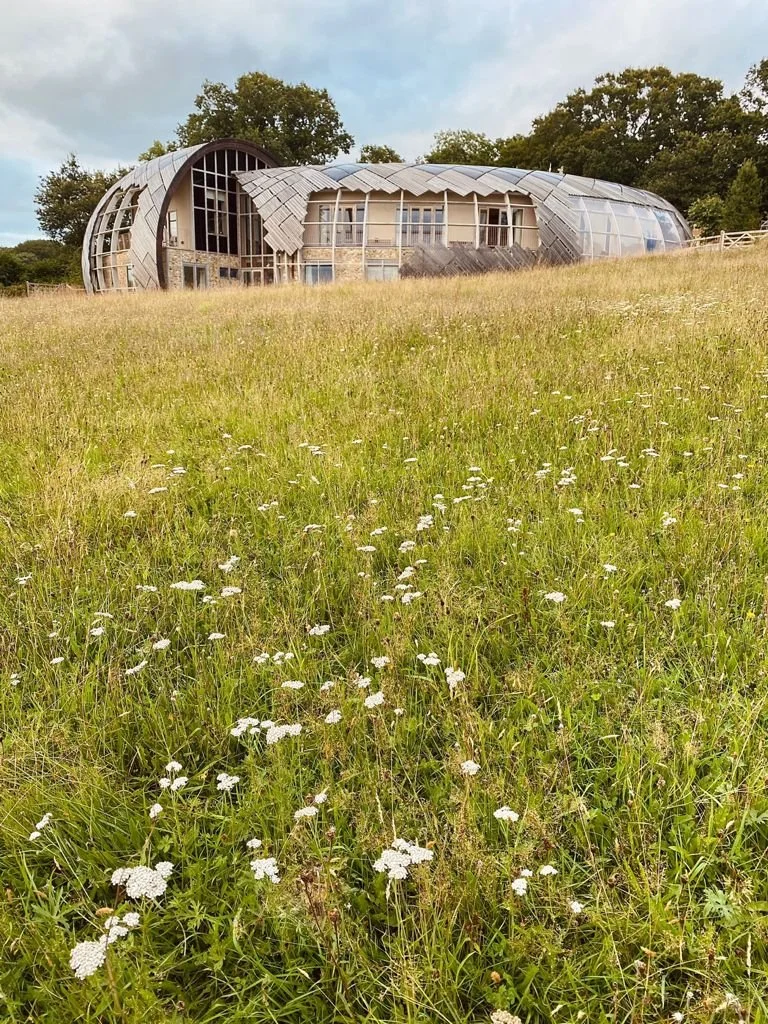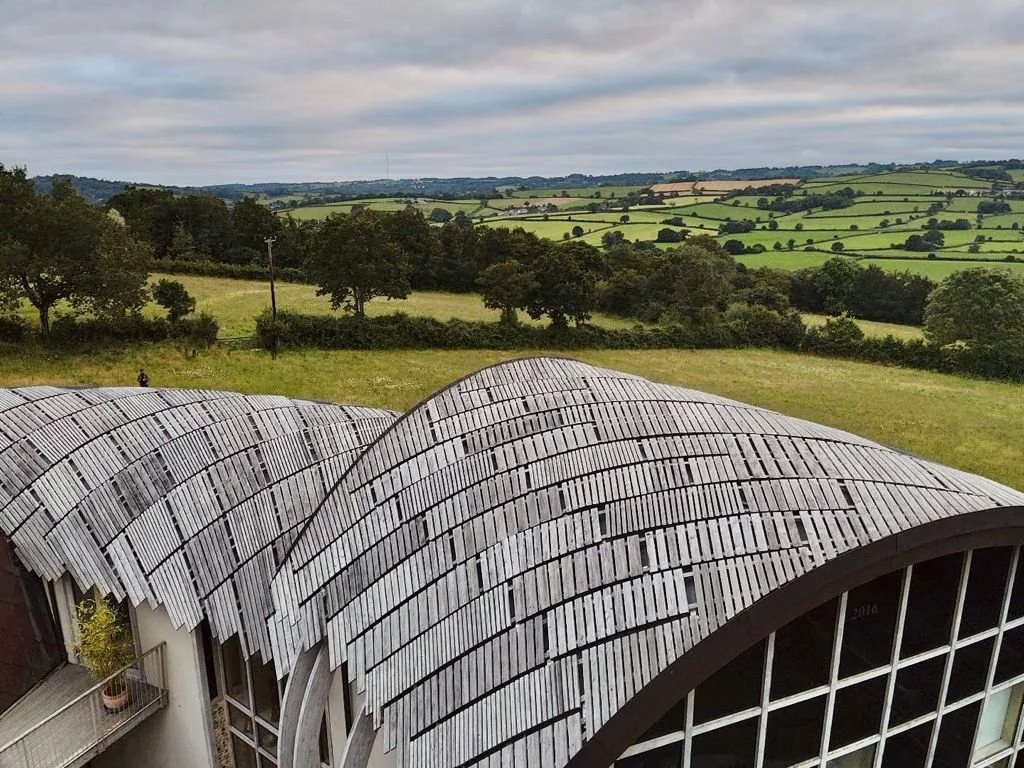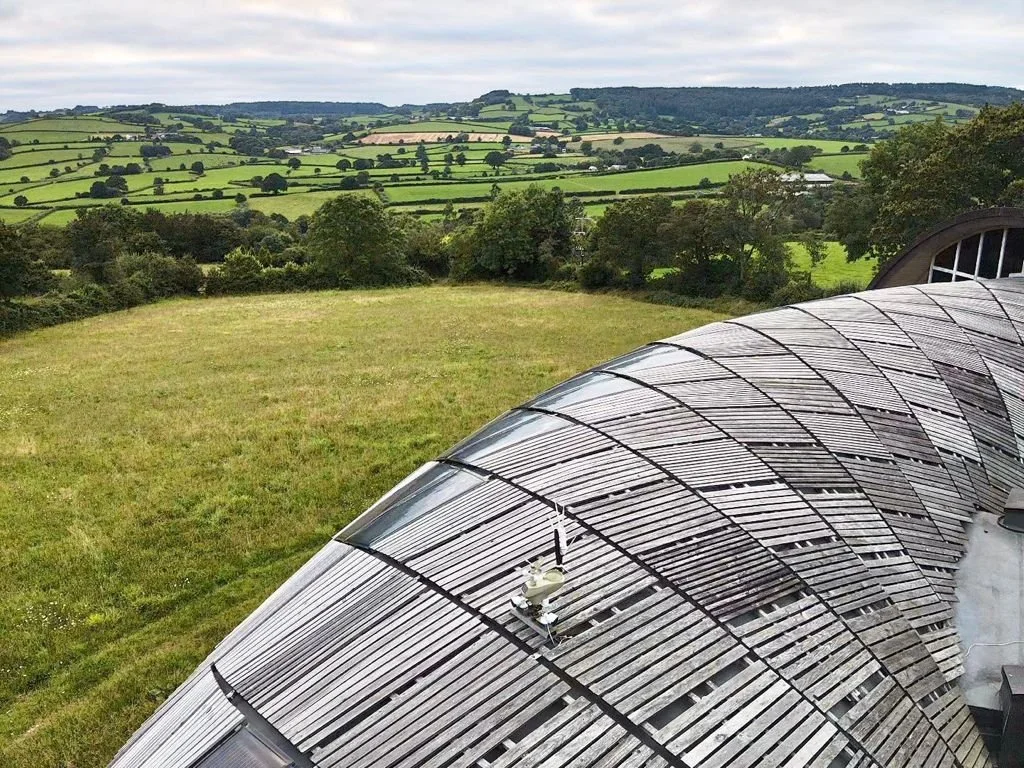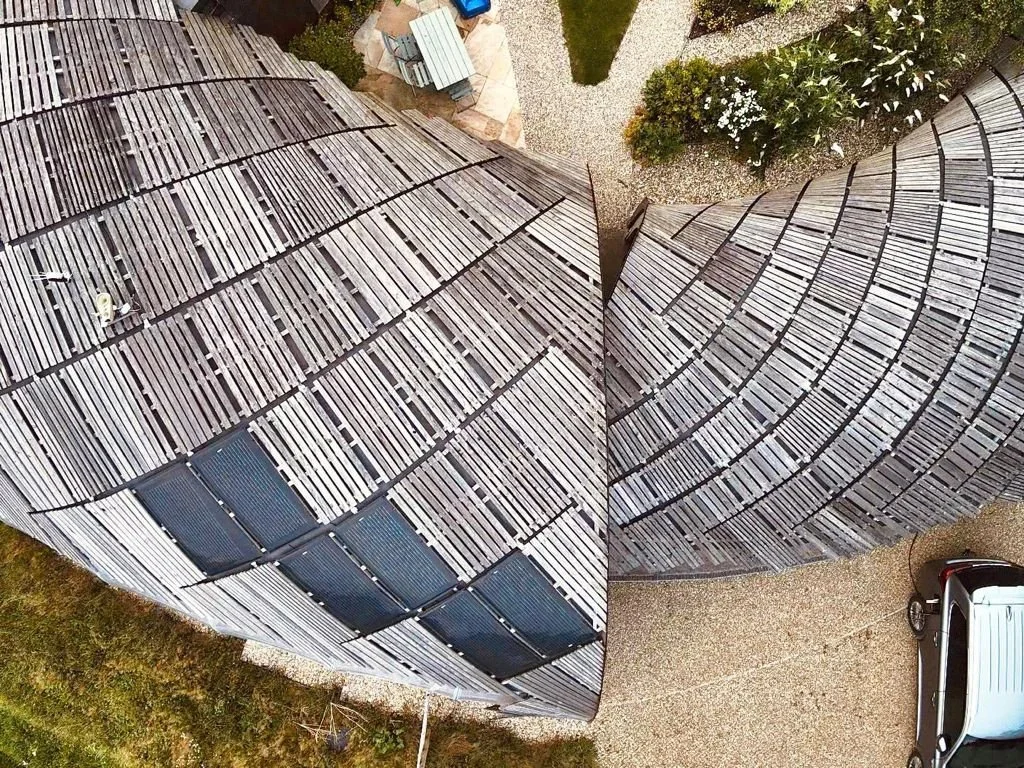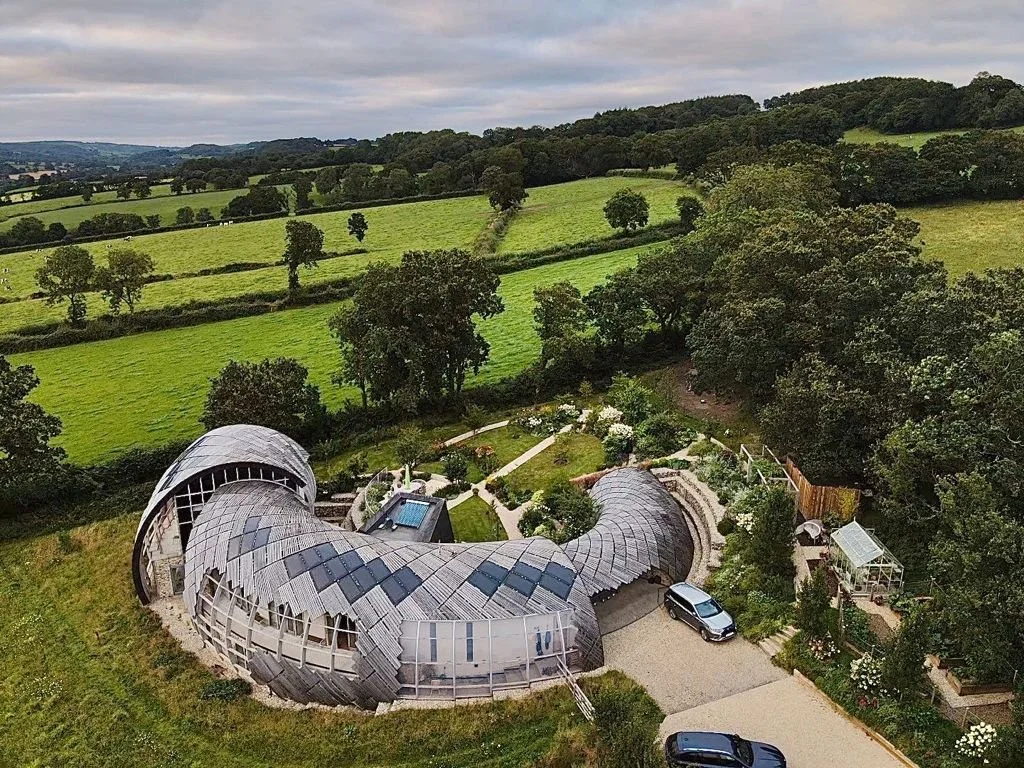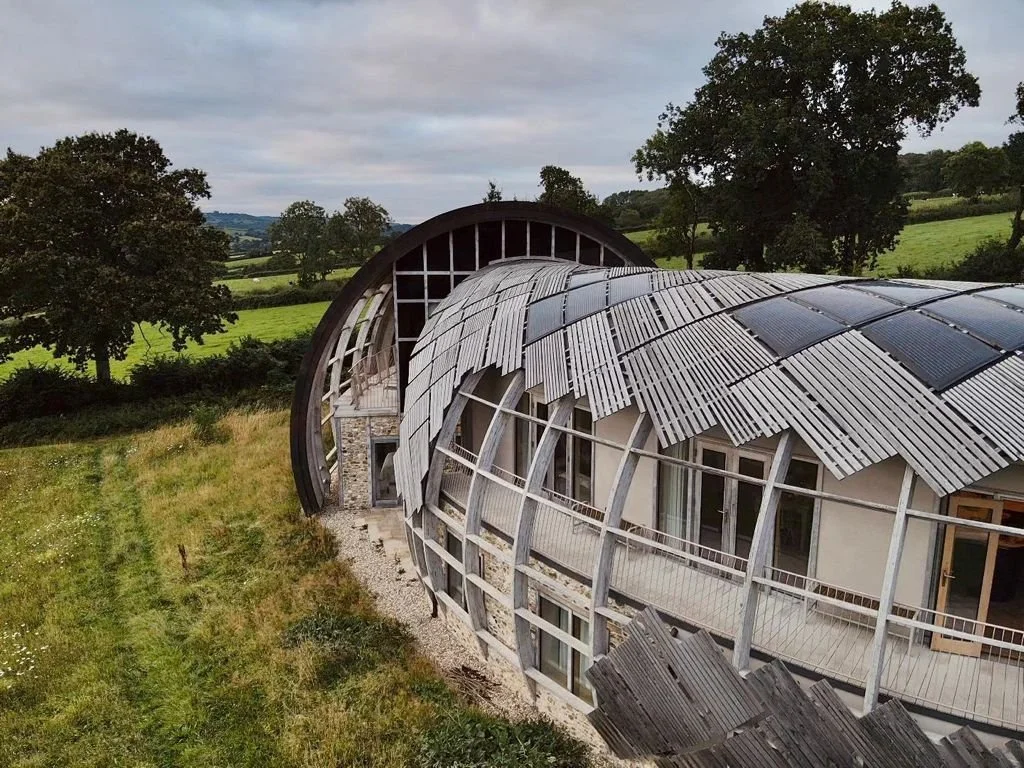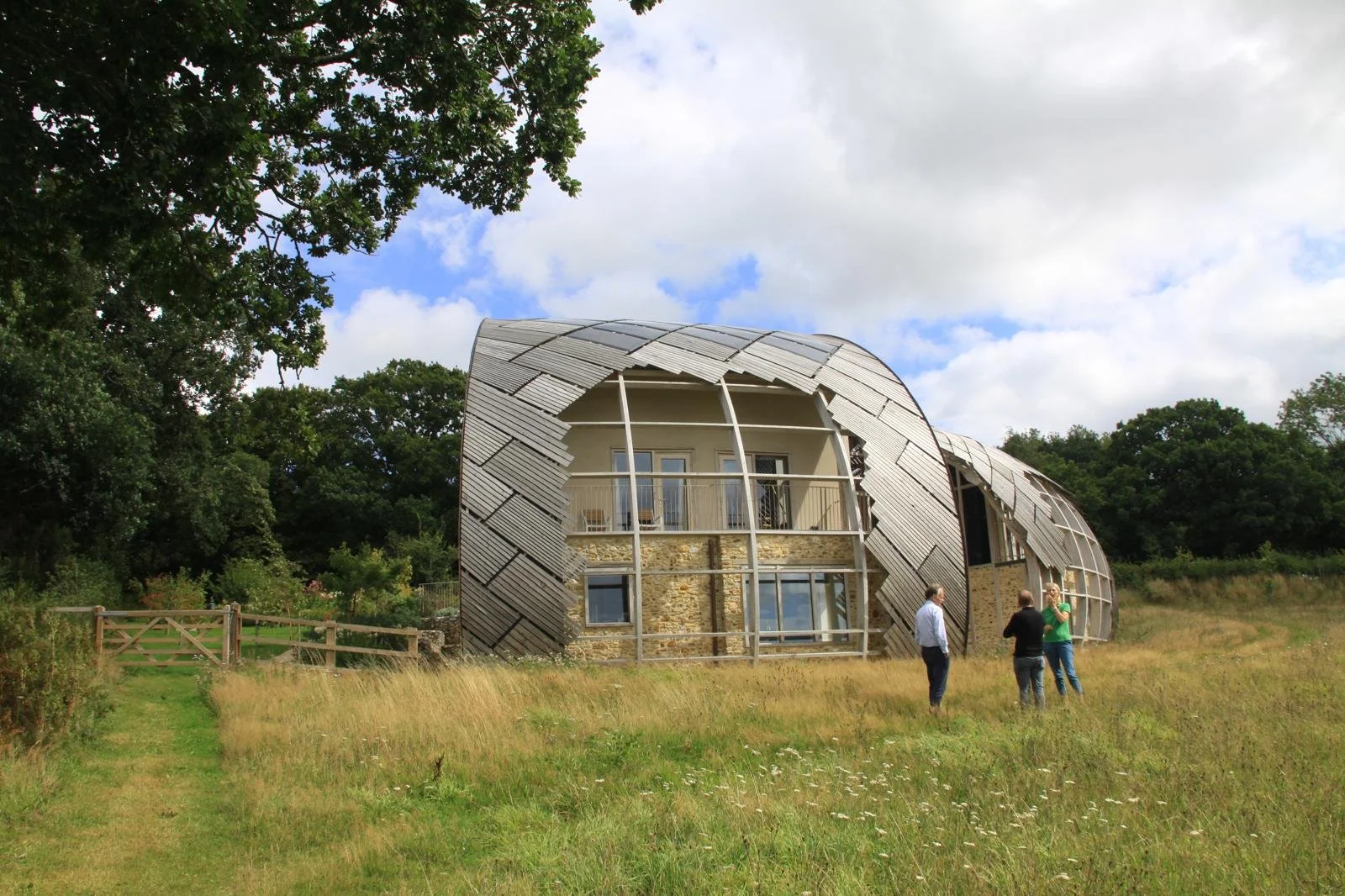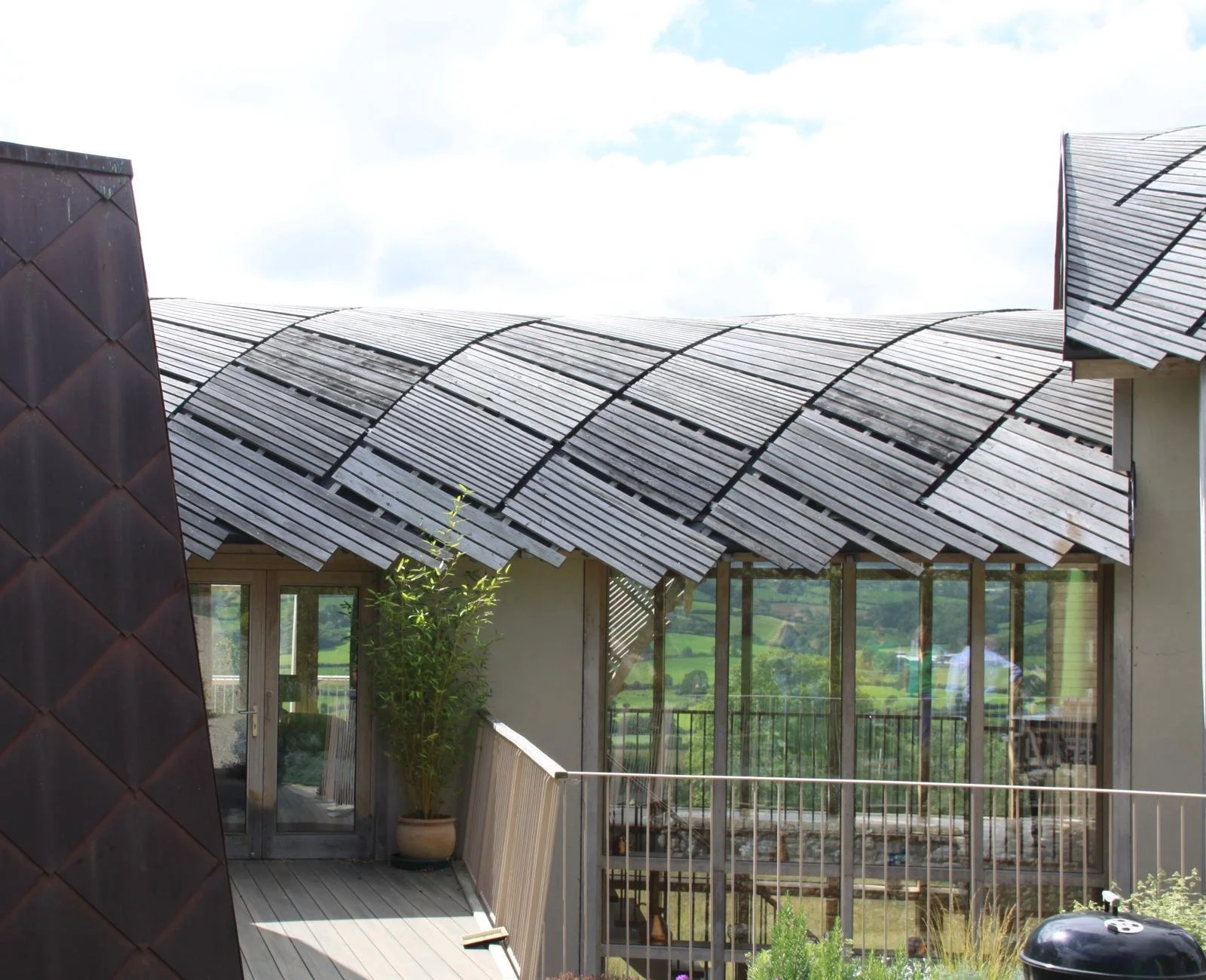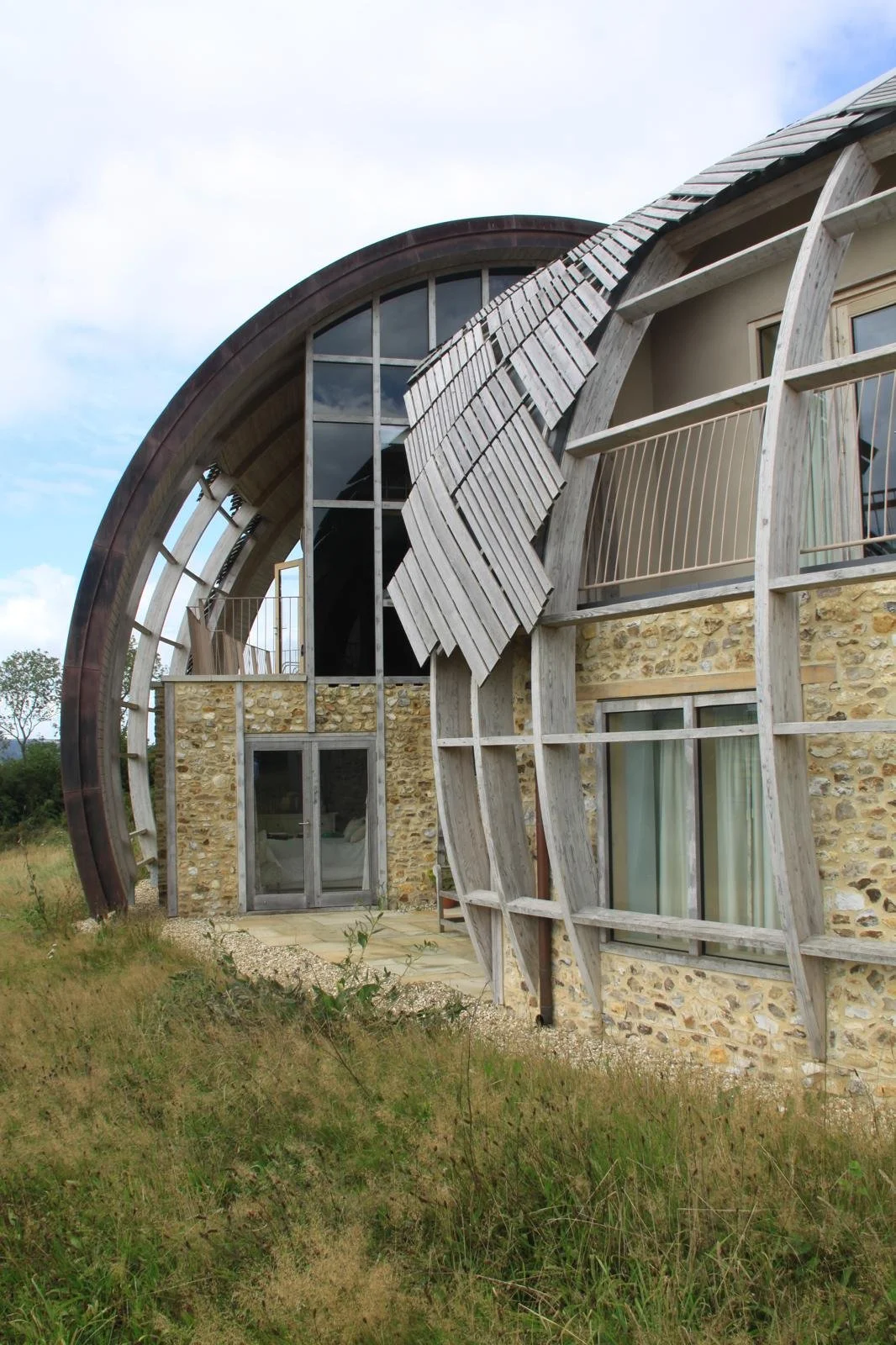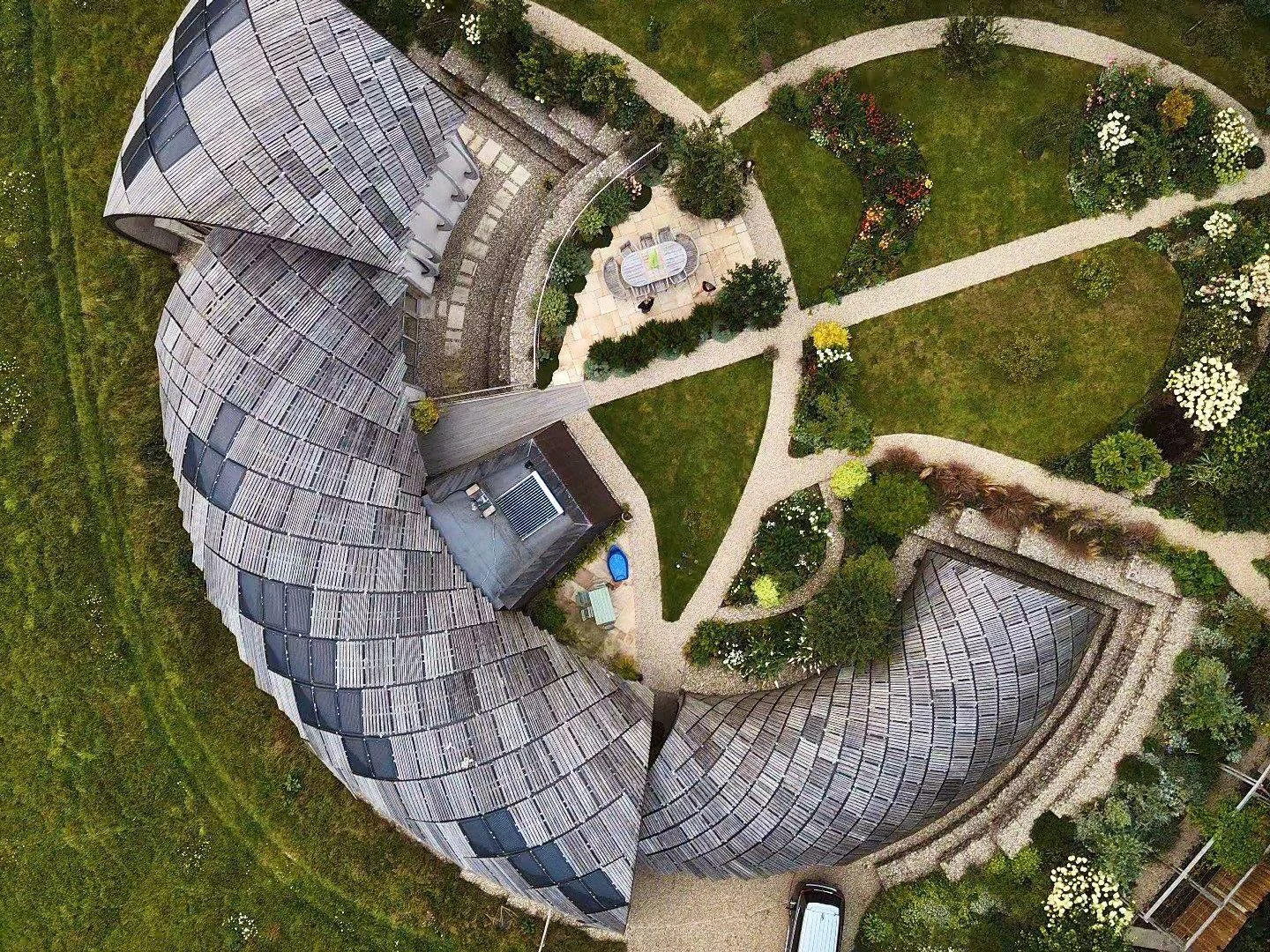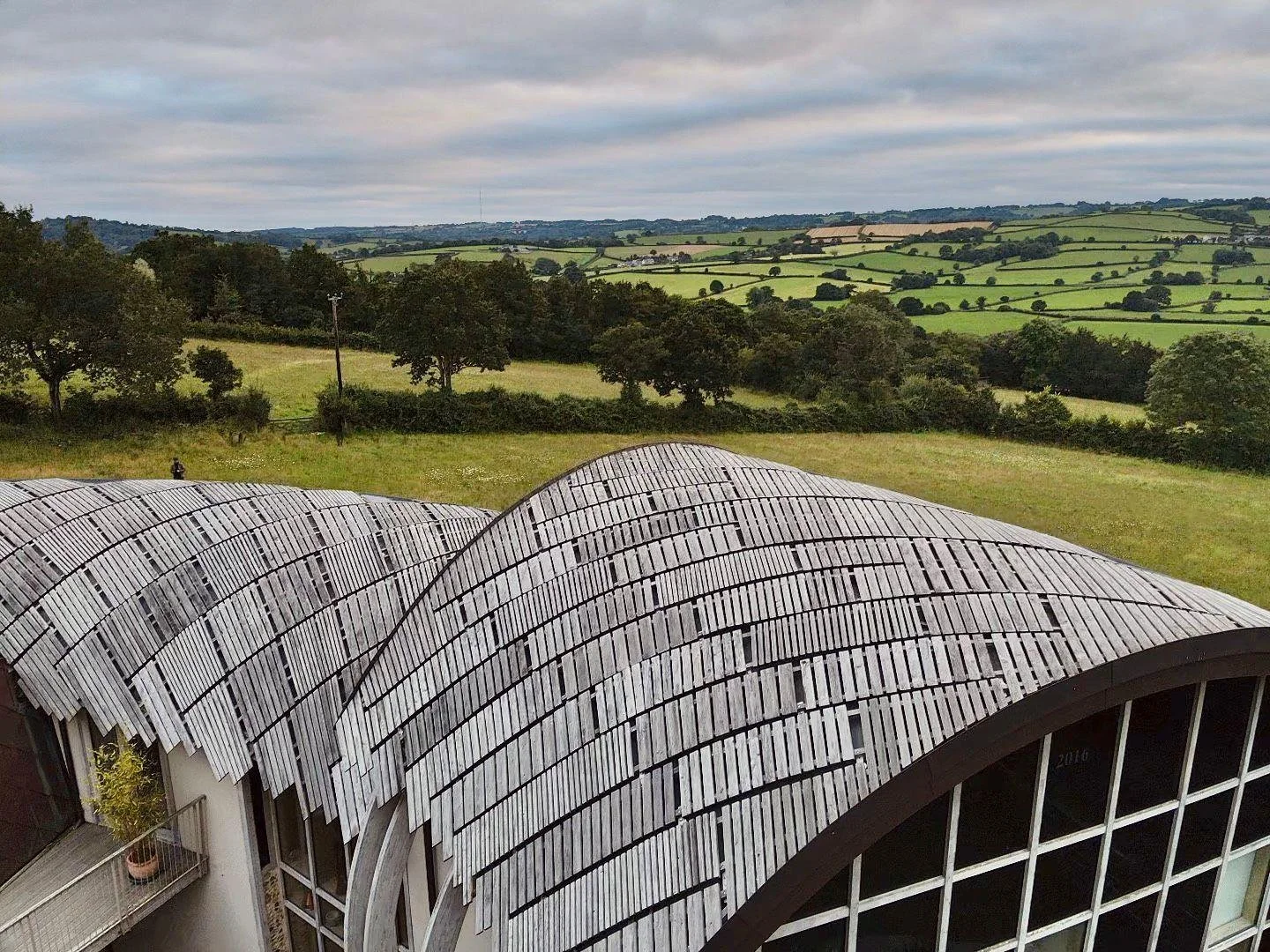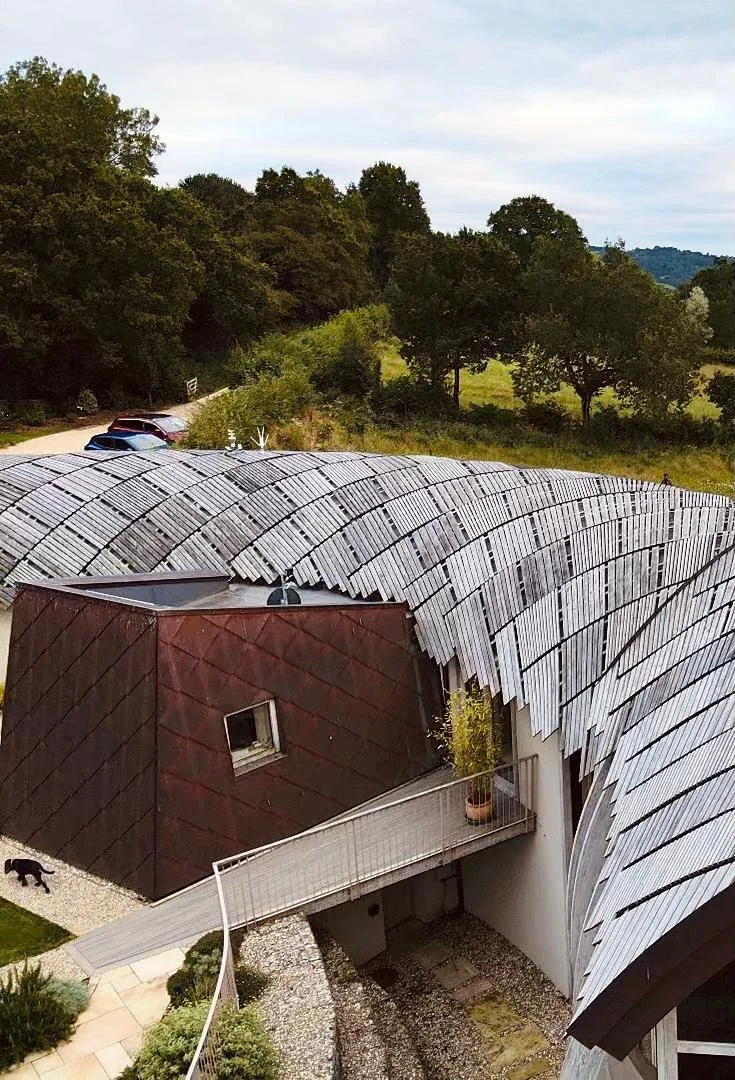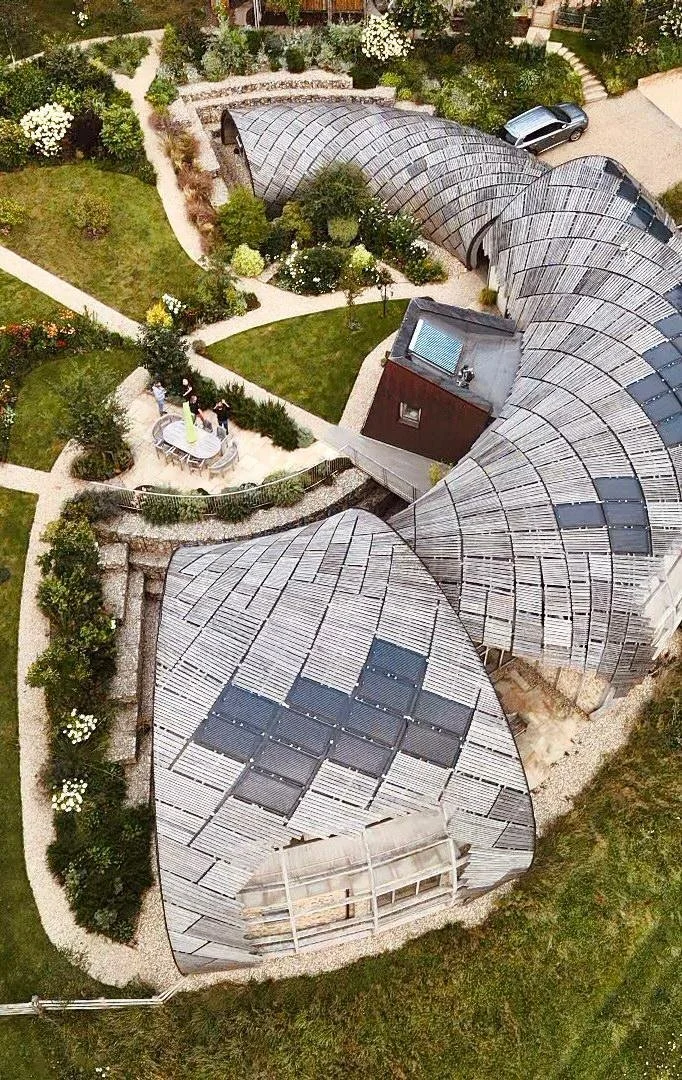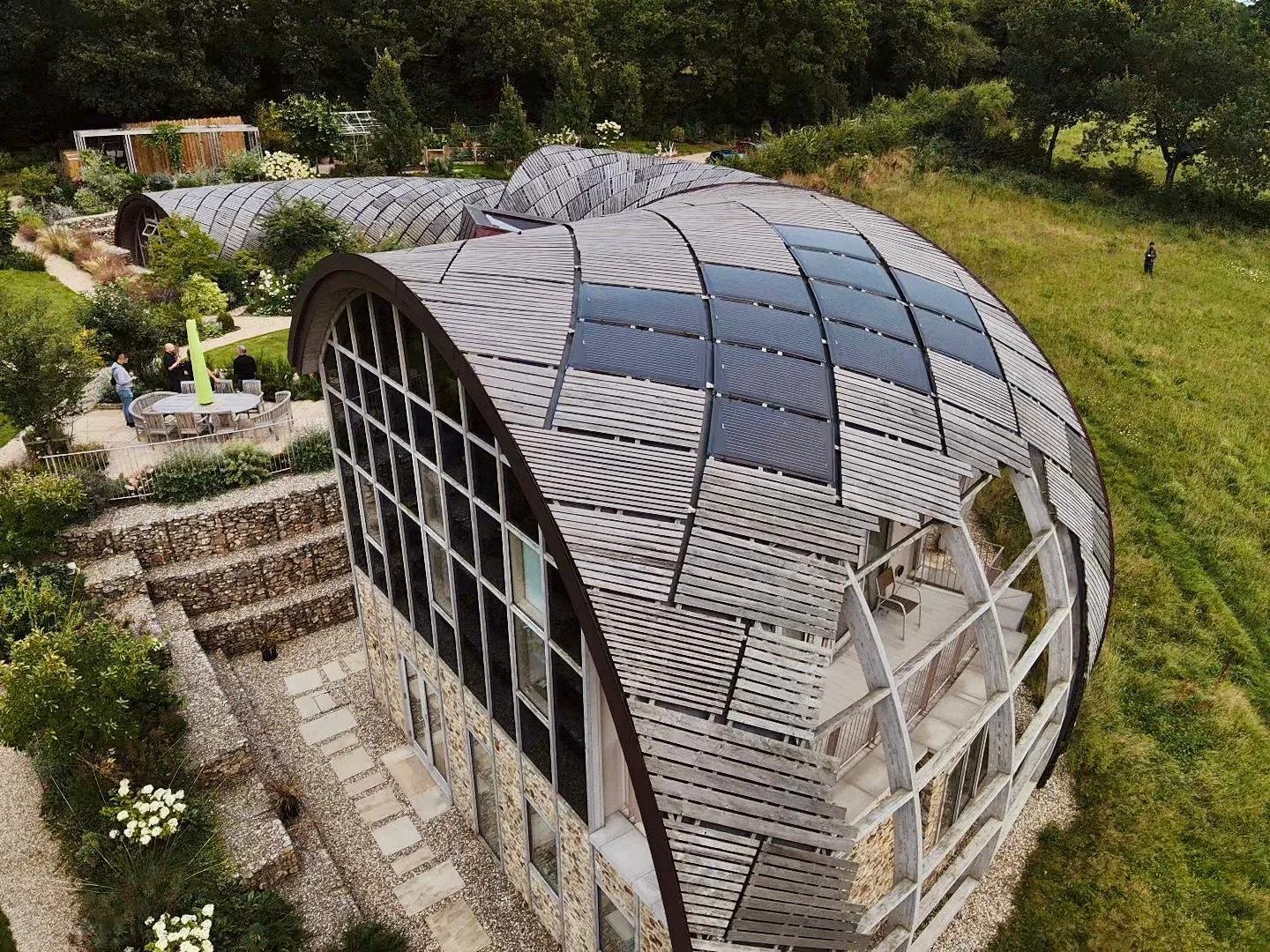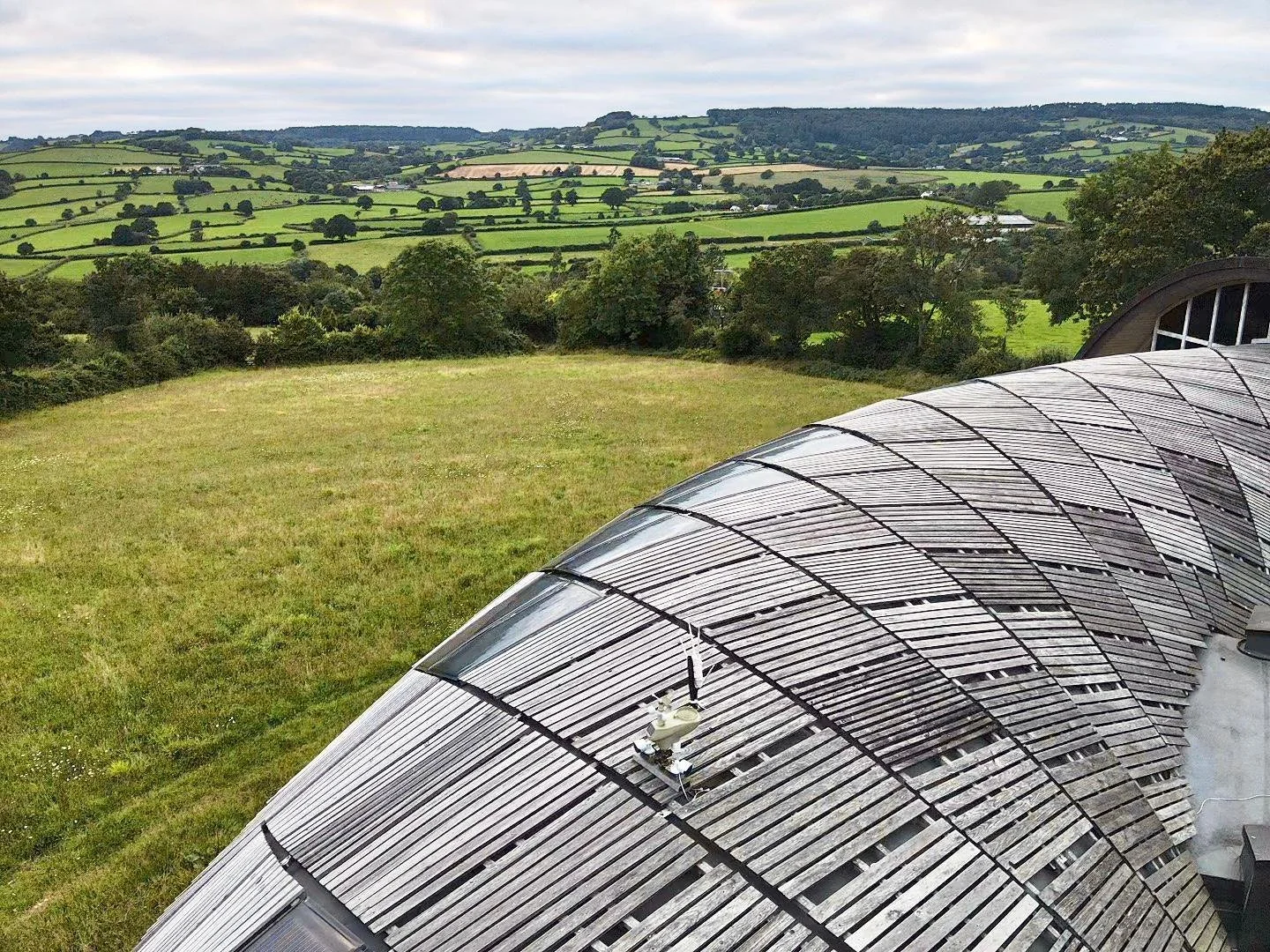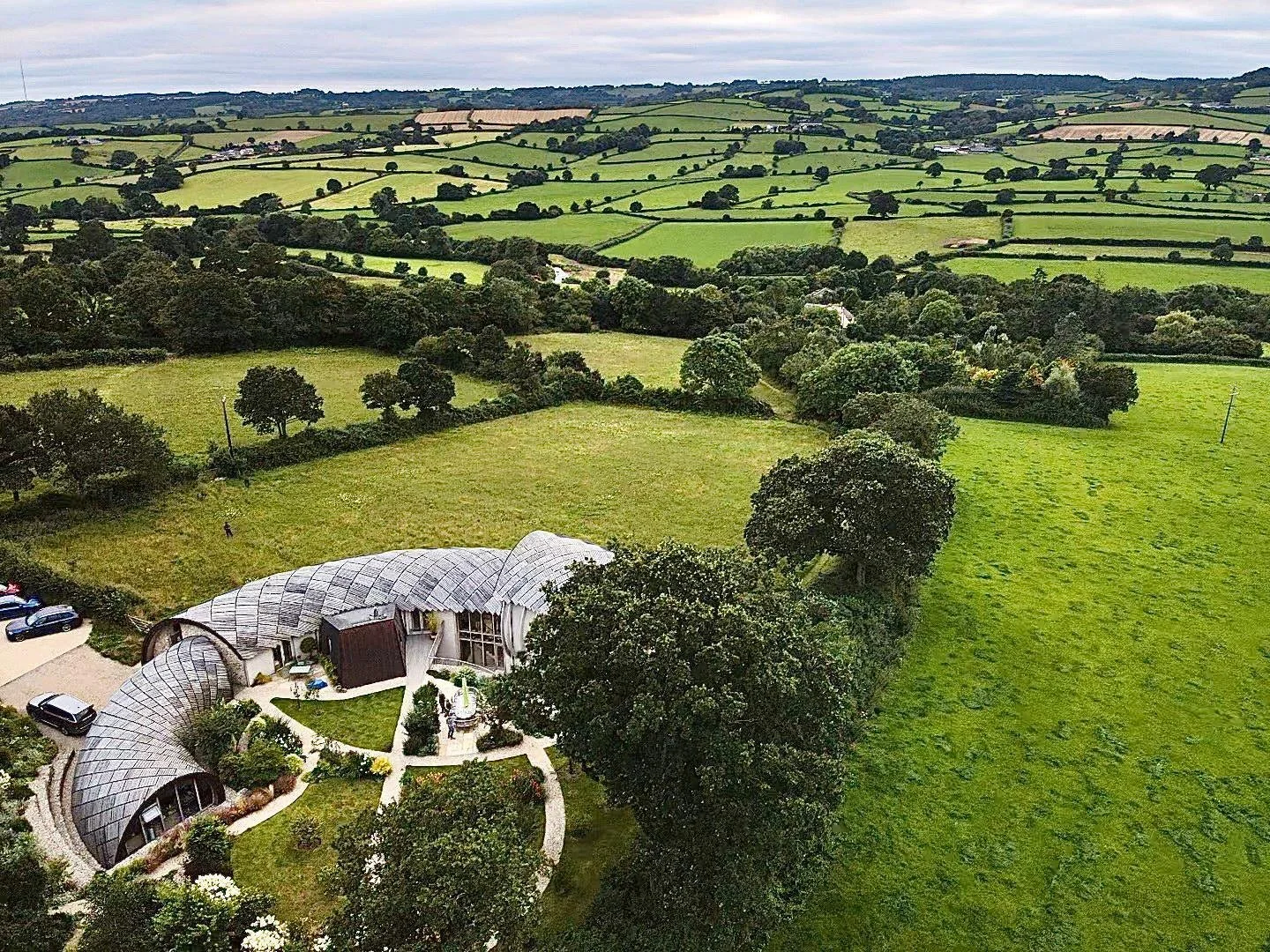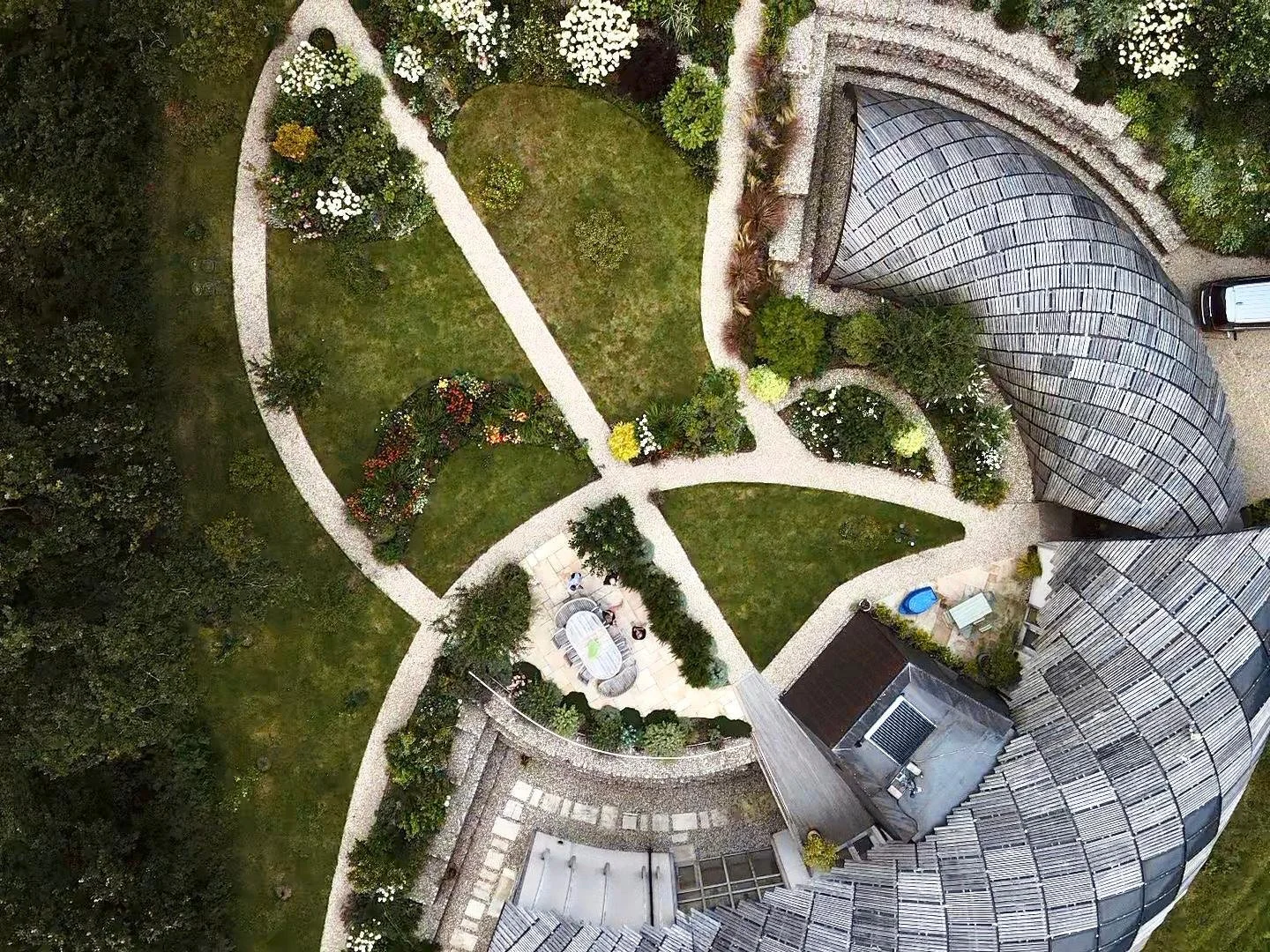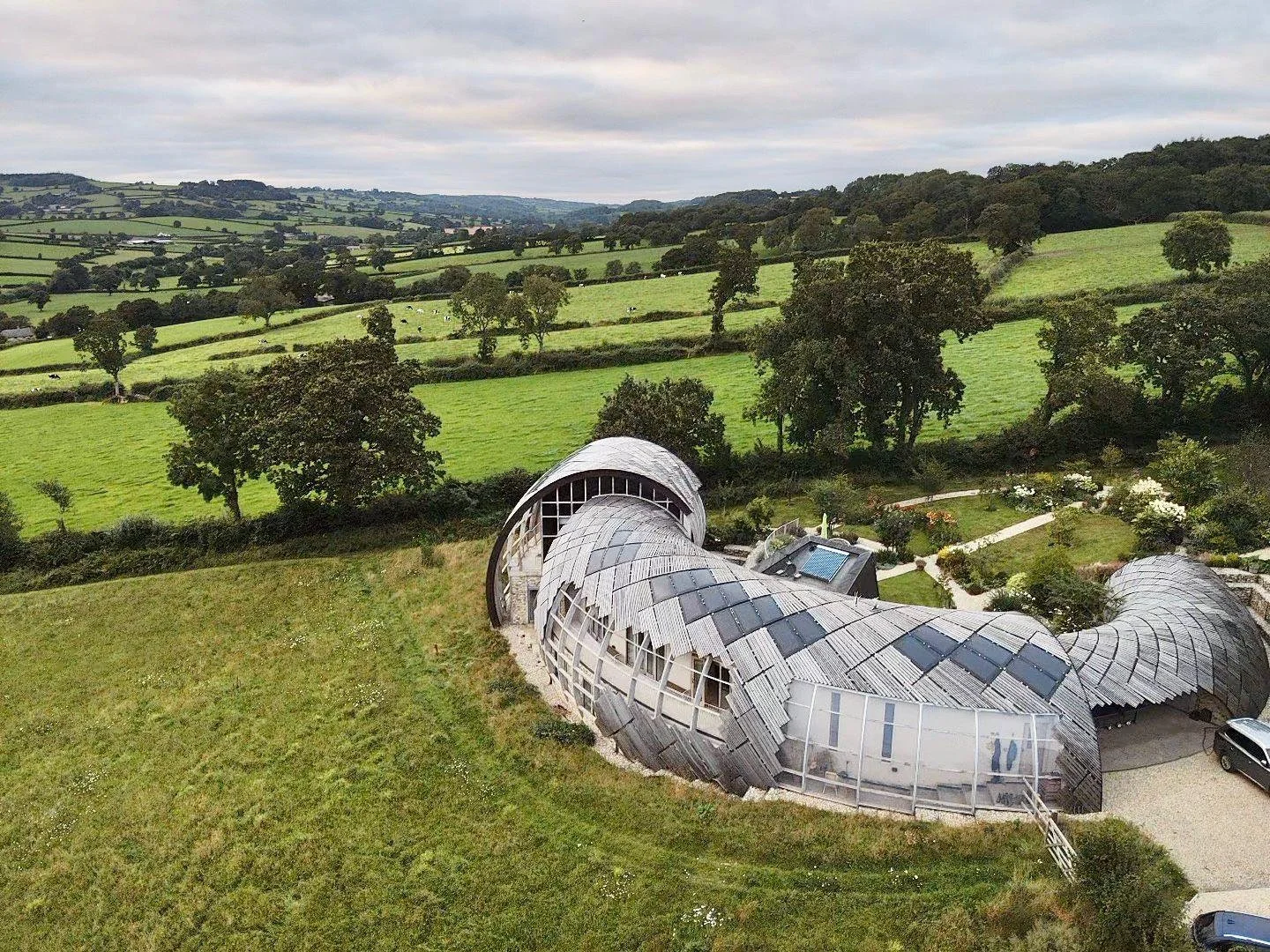Oat Errish
North Devon, Paragraph 55
-
A single small object set Stephen and Elizabeth Tetlow on a journey that led to the creation of Oat Errish Farm, located in the Blackdown Hills, an Area of Outstanding Natural Beauty near Taunton, on the border of Devon and Somerset.
Known as the ‘fossil house’ or ‘snake house’, this extraordinary home was first featured on Grand Designs in 2017 and was designed to form a deep connection with its idyllic rural surroundings.
-
“The inspiration for the shape came from an ammonite fossil that we had on our dining room table,” explains the client. “The building is shaped in what is known as the golden ratio in both plan and section. It is found many times in nature too, such as in the spiral patterns in pinecones and the fronds of a fern. So, the idea was to design our home to reflect the nature around it.”
-
The house follows an inverted layout, with:
Bedrooms located on the ground floor.
Living areas on the first floor, creating an open-plan space that seamlessly blends kitchen, seating, and relaxation areas.
-
The interior is defined by its soaring ceiling, supported by exposed curved glulam beams, which form the house’s structural backbone. These beams:
Are crafted from English larch grown in Devon and Cornwall.
Were manufactured off-site to precise golden ratio measurements.
-
“Living in a curving house seems to create a calming and harmonious balance,” says Stephen. “It is a truly amazing place. The quality of the light and the view from each window is glorious. Our home has a real sense of place and a wonderful connection with the fields and meadows.”
-
The design met the strict criteria of Paragraph 55 of the National Planning Policy Framework (now Paragraph 80e), which governs new homes in the countryside. Achieving approval required:
A design team with experience in similar projects.
Perseverance through challenges.
“If you read it [Paragraph 55], you think there is no way we are going to be able to comply with any of that,” says Elizabeth. “But actually, with a lot of care, research, and help from professionals, it is possible.”


